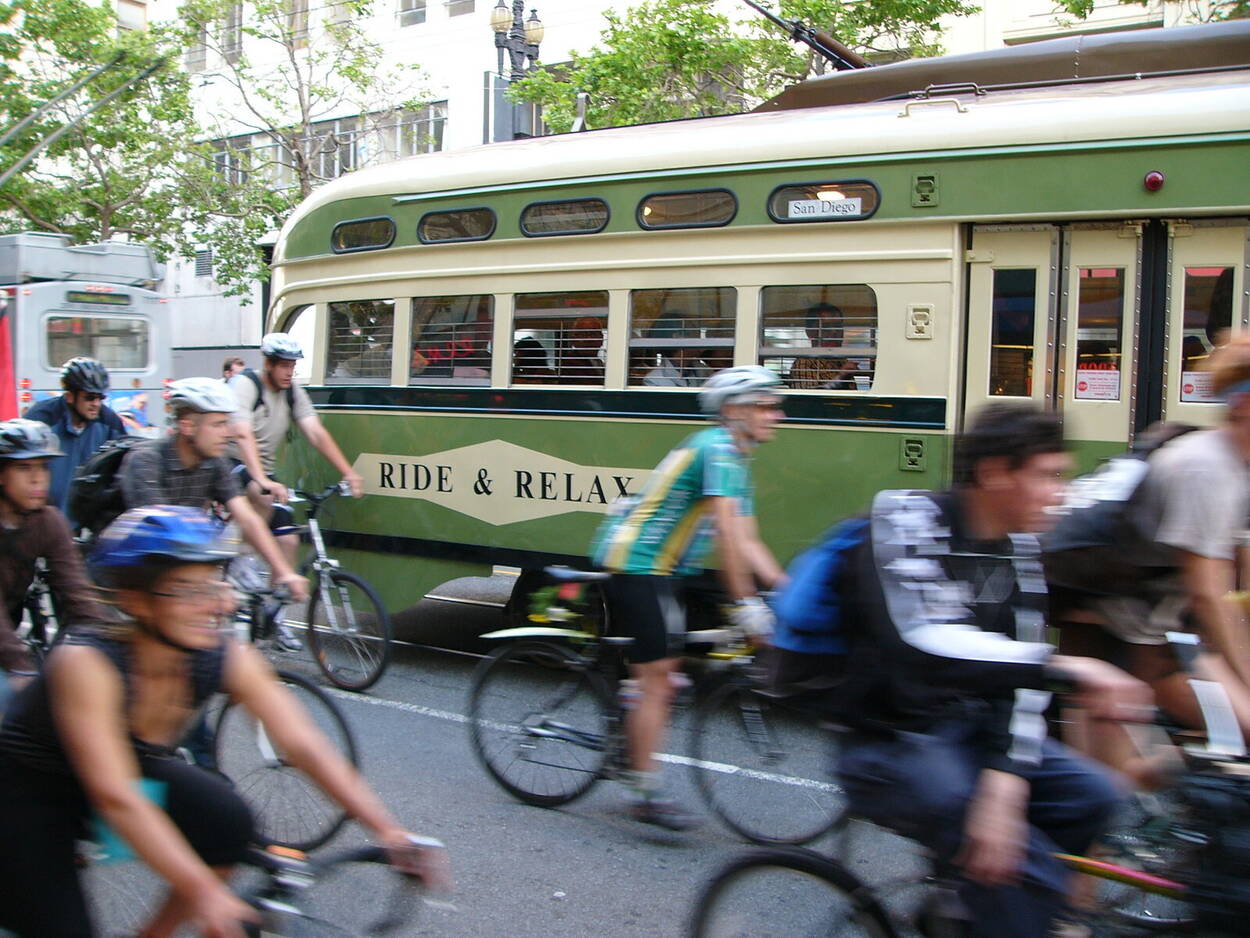Bikes and public transit mean freedom
August 11, 2023
Bikes and public transit mean freedom.
On a bicycle, you’re fast but nimble. You can easily match or exceed the average speed, if not top speed, of a car in an urban environment. You never get stuck in traffic. Even if the whole road is blocked, you can walk your bike on the sidewalk and be a pedestrian. And you don’t have to fill up on gas, or convince your landlord to install EV chargers in your building, or go into debt, financing a car purchase that’s orders of magnitude more expensive than a bike.
Transit has different advantages. It can be slower than bicycling, especially in the case of buses. You might have to wait. At home in San Francisco, I admit I bike more often than I ride transit, to save time. But when you ride transit, you don’t have to worry about a bike or car parked in a fixed location. You can walk from one place to another, boarding a totally different line at a totally different stop to get home. You can still get home safely if you’re tired or have indulged in substances. Or, if you’re mentally sharp, you can read a great book or catch up on emails along the way. And transit can accommodate more types of disabilities, including temporary ones most of us will experience at some point.
Together, bikes and transit, and a transportation system that makes them safe and practical, offer freedom. Cars could never.

The association of cars with freedom is a marketing myth. It can never be realized. Car ads depict “the open road,” where there’s nothing but you and your car, speeding along. That’s not our reality. The days of the frontier are over. We live in cities (and suburbs, but they’re just sprawled out, space-wasting cities). Unless you’re in a depopulated, disinvested place—and that comes with its own problems—there’s going to be congestion. Driving a car is going to get you stuck in traffic. You have to worry about parking that huge thing. About it getting scratched or burglarized while parked. And you have to ultimately get back to your car, which limits your options for where you can go in the city, what you can do.
For the supposed freedom of driving to be real, there would need to be only a few people with cars. If only 1 in 50 city dwellers had cars, there would be enough space for parking. Traffic wouldn’t back up. It would offer a big advantage over everyone else in getting around (provided that everyone else was prevented by law, custom, or the threat of violence from getting in the way). But as soon as car ownership becomes widespread, that’s gone. The cars overwhelm the space. It’s a geometry problem. It’s why 50 years ago, André Gorz observed that “the car is a luxury good. And the essence of luxury is that it cannot be democratized. If everyone can have luxury, no one gets any advantages from it.” By coincidence, that same year, 1973, San Francisco passed its Transit First policy.
Unfortunately, few people in charge of transportation planning in the United States heeded Gorz’s warning. Even my city often ignores its Transit First policy. So now we’ve got a society where the car is mandatory for many people, where transit is often slow and infrequent if it goes where one needs to go at all, where there’s no safe place for a bicycle on busy roads. In this system, of course it feels like a burden lifted when you go from lacking car access to having it.
But that’s not freedom, just coping with a fundamentally unfree system. If we want real freedom of mobility, it will come from bikes and public transit.
